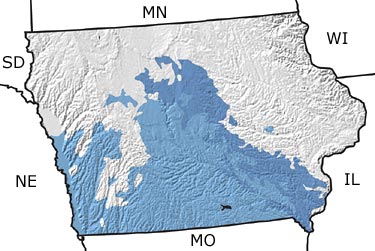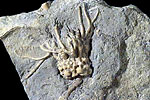Paleontology and geologyWarm, shallow seas covered Iowa during the Early Carboniferous (Mississippian). Spectacular fossils of crinoids and asteroids (“starfish”) have been collected from rock layers of this time, and lacy bryozoans, cephalopods, and other marine animals are common in the limestones and shales. As the sea retreated from Iowa at the close of the Mississippian, a sequence of river and lake sediments was deposited. Some of the world’s oldest amphibian fossils have been recovered from these layers of rock in east-central and southwestern Iowa.
Late Carboniferous (Pennsylvanian) rocks are quite extensively exposed in southwestern Iowa. Multiple cyclothems, repeating patterns of marine and non-marine sediments, indicate numerous advances and retreats of a shallow sea over this part of the state during this time. Seed ferns and scale trees were common in the coastal swamps adjacent to the sea. Their fossils can be found in abundance in some of these rocks. During the late 1800s and early 1900s, coal resulting from the rich plant life was mined extensively. Iowa’s Pennsylvanian rocks contain large reserves of coal, but its high sulfur content has discouraged continued extraction. |


